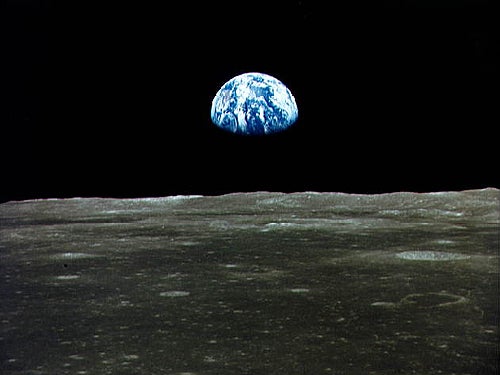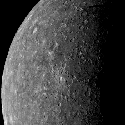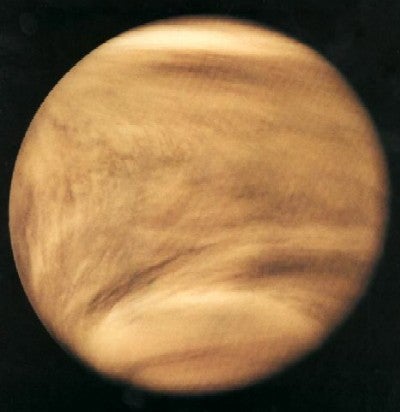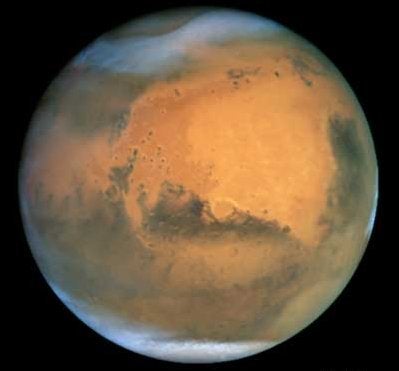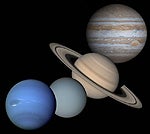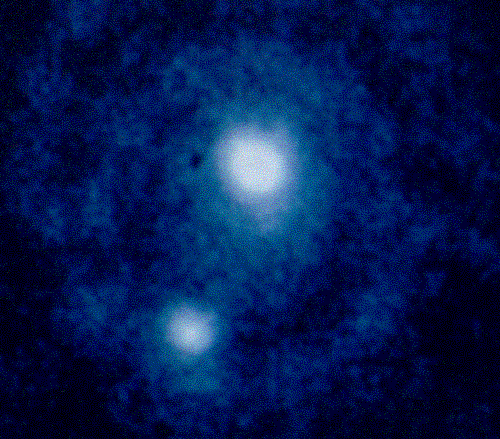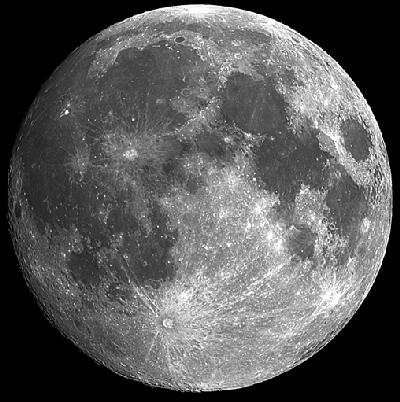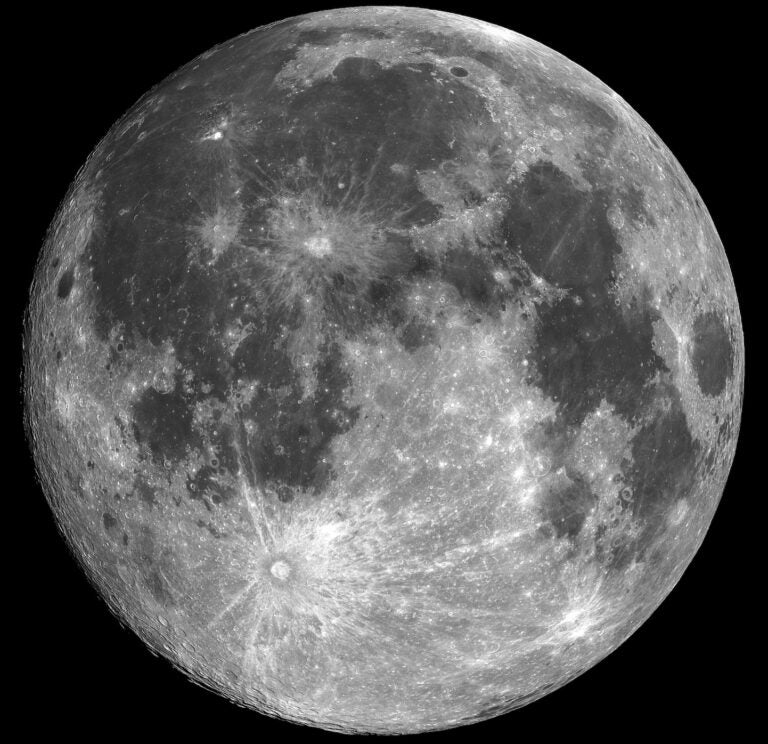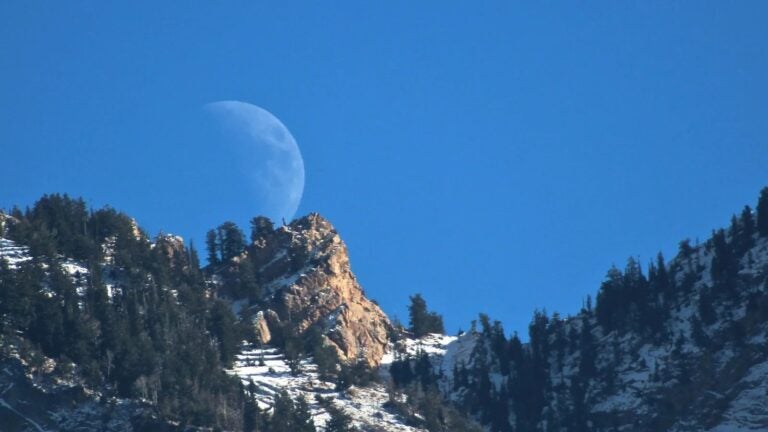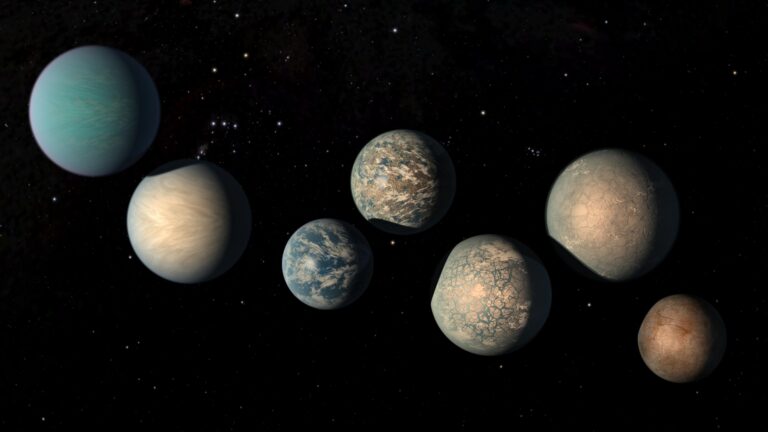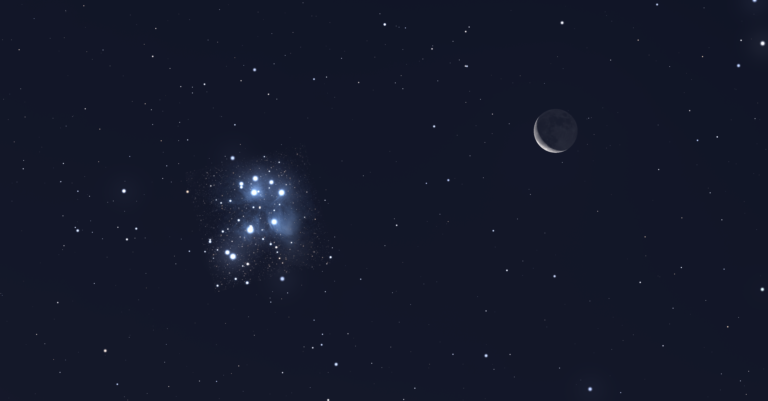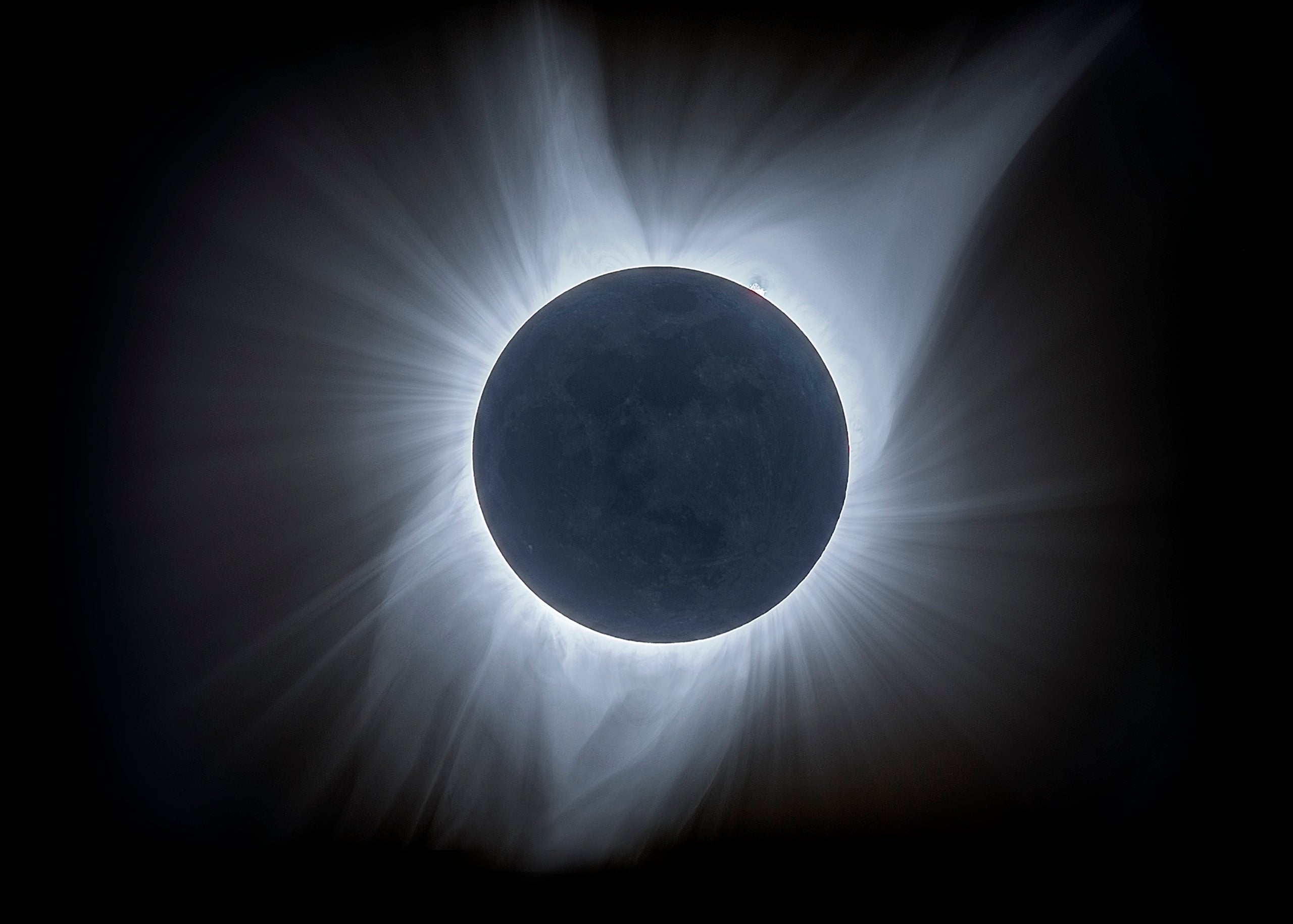In the grand scheme of things, the planets in our solar system don’t amount to more than a hill of beans. Add together all the material in the planets, their moons, asteroids, and comets, and the amount totals less than one percent of the Sun’s mass. Yet even though they may be just a blip on the radar screen of some extraterrestrial civilization, the planets and moons of our solar system prove to be fascinating worlds.
The planets divide neatly into two broad categories: terrestrial and jovian. The terrestrial planets are basically small, rocky worlds and include Mercury, Venus, Earth, and Mars; the jovian planets are all gas giants and consist of Jupiter, Saturn, Uranus, and Neptune. Pluto, once considered the outermost and smallest planet, is an oddball that the International Astronomical Union now classifies as a plutoid.
In general, planetary scientists have scrutinized the terrestrial planets in far greater detail than the jovian planets. Earth, of course, has been an object of scientific inquiry ever since people first started to ponder their place in the universe. Sophisticated spacecraft have examined both Venus and Mars from orbit and from the surface. (NASA’s most recent success placed two rovers on the martian surface during 2004.)
Mercury remains the most enigmatic of the terrestrial worlds. It lies so close to the Sun that observations from Earth reveal precious little.
In the mid-1970s, NASA sent the Mariner 10 spacecraft on three separate flybys of the innermost planet. The spacecraft revealed a startling fact: Mercury has such a high density that more than half of it must be made out of iron and nickel.
The planet’s surface shows lots of craters, most dating from the age of heavy bombardment that characterized the solar system about 4 billion years ago. During this period, errant comets and debris left over from the solar system’s formation pummeled most planets and moons.
Of all the planets, Venus most resembles Earth. The two have nearly the same size and density, yet the moniker “Earth’s twin” fails miserably for Venus. Earth has a relatively benign climate conducive to the presence of liquid water (and thus life). The surface of Venus, however, bakes at a temperature of 800° Fahrenheit. Its massive atmosphere of carbon dioxide traps solar radiation and creates a runaway greenhouse effect. Atmospheric pressure at the planet’s surface is nearly 100 times greater than that on Earth. Craters on the surface of Venus show that volcanic activity resurfaced the entire planet about 600 million years ago. This contrasts with Earth, where steady volcanism and erosion gradually covered up signs of ancient impacts.
Mars has long fascinated humans, in no small part because its surface is the only one that can be seen clearly from Earth. Changes in its appearance led some imaginative scientists to believe that a dying civilization was tapping into dwindling water supplies. Those hopes were dashed when the first spacecraft images revealed a cratered and apparently barren surface. Yet subsequent missions revealed a more nuanced world, where craters share space with massive (albeit extinct) volcanoes, giant canyons, and dry channels. The most recent rovers have left little doubt that liquid water once existed on the martian surface. So the question remains: Could life ever have started on the Red Planet? A famous meteorite from Mars known as ALH84001 contains tantalizing evidence of possible microfossils. And, if water once flowed on the surface, life might have followed.
The jovian planets seem to have less diversity than their terrestrial counterparts because all we see are the tops of their cloud layers. Jupiter, Saturn, Uranus, and Neptune all have thick atmospheres consisting largely of hydrogen and helium. Various minor constituents create the subtle colors that cause them to look different through a telescope. The term “gas giant” fits these planets perfectly — even the smallest, Uranus, weighs in at 15 times the mass of Earth. All the jovian planets have ring systems as well, although only Saturn’s shines bright enough to be seen easily from Earth.
The International Astornomical Union reclassified Pluto as a dwarf planet in 2006, and then as a plutoid in 2008. It also consists of a mixture of ice and rock, which puts it more in line with some of the moons of the outer planets. Most scientists now consider it to be the largest Kuiper Belt object, a group of objects now numbering more than 700 that orbit beyond Neptune.
Moons in the solar system run the gamut from small objects that likely were captured by their parent planets — think of the martian satellites Phobos and Deimos, as well as most of the dozens of small, irregular satellites orbiting the gas-giant planets — to big objects that rival the planets themselves in size. Jupiter tows its own miniature solar system with it as it orbits the Sun. Its four large moons — Io, Europa, Ganymede, and Callisto (in order from Jupiter) — were discovered by Galileo when he first pointed his telescope at Jupiter in 1610. The largest, Ganymede, has a diameter of 3,270 miles, making it larger than Mercury. Tidal forces from Jupiter heat Io’s interior so intensely that this moon is the most volcanically active body in the solar system. The same tidal forces heat Europa’s interior, melting the moon’s subsurface ice and creating perhaps the largest ocean of liquid water in the solar system.
Saturn also hosts several moons, including the mysterious Titan. This moon, second in size to Ganymede, possesses a hazy, nitrogen-rich atmosphere thicker than Earth’s atmosphere that hides its surface from view. The equally enigmatic Iapetus features one hemisphere that appears ten times brighter than the opposite one. Both will be prime targets for NASA’s Cassini spacecraft, which went into orbit around Saturn in early July 2004.
Of all the moons in the solar system, none has been studied more thoroughly than Earth’s. Even from Earth, the Moon appears big enough to show detail through a telescope. Its highly cratered highlands stand in stark contrast to the darker, lightly cratered maria, created by giant impacts that took place during the era of heavy bombardment and subsequently filled with lava. The Moon ranks as the fifth largest satellite in the solar system and was born in what seems to be a unique process. Most of the large moons in the solar system were created in protoplanetary disks, dusty disks that surrounded the planets during their formation. The moons condensed out of these disks in much the same way as the planets condensed out of the solar nebula. But our Moon appears to have formed when an object the size of Mars gave a glancing blow to the proto-Earth, ejecting debris into orbit that eventually coalesced into the Moon.

